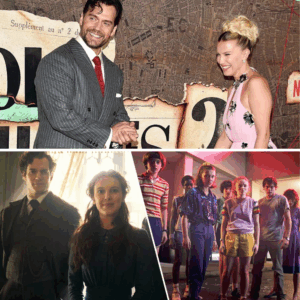Leslye Headland sat down with IGN to discuss The Acolyte, and while our guide breaking down her other interviews is pretty complete, she did offer up some new insights worth highlighting in a new post.
The Acolyte’s Star Wars Influences

I think you’re seeing the Jedi when they are this very, very large institution – a benevolent one – but they are closer to who they are in the Phantom Menace than obviously in the Original Trilogy where you feel like they’re almost extinct. In a weird way, in the Phantom Menace and the Prequel Trilogy, the Jedi outnumber the Sith. And then in the Original Trilogy, the Empire outnumber the Jedi, which is why a show based on the “bad guys” is interesting to me. In that era, what does the underdog look like? Even if they’re the bad guy.
But also, The Clone Wars [inspired The Acolyte], a lot being inspired by Nightsisters. We don’t have any Nightsisters in this show, but being inspired by them, being inspired by Asajj Ventress. My favorite episode is The Wrong Jedi. I definitely took some inspiration from that.
We kind of ran the gambit: “Let’s reference Return of the Jedi here, let’s reference this holding cell based on a Clone Wars episode here, let’s have a Cantina,” because I’ve always wanted one. I think when you get an opportunity to do a Star Wars and you’re a Star Wars fan, the idea is to get in a lot of your wish list. And hopefully other people are excited by it too.
Leslye Headland – IGN
The Nightsister clarification is key, so we don’t have to worry about Mother Aniseya played by Jodie Turner-Smith being tied to Dathomir in anyway, but more importantly, I think Headland is really tipping her hand with the reveal of what Clone Wars episode she was really inspired by for this series. “The Wrong Jedi” definitely highlights how the Order can turn on their own unjustly, and what that shunning can do to a padawan.
The Acolyte Similar to Mando and Andor?

When asked if her series would be similar to the other live-action shows, Headland had this to say:
I think it’s very different. We’ve utilized practical sets much more so than the other shows. And part of that just came out of necessity and part of it was a creative choice. We utilized action in a way that I would say… You see action a lot in the other shows but I would say that because of the influence of samurai, musha, and martial arts films, they become part of the storytelling as opposed to an action sequence. I think that’s something that’s a little different. Each fight tells you a little bit more about the characters. I think stylistically that’s how they’re different.
I’m also not sure how Jedi-centric the other shows are. Obviously Ahsoka is. But we’re looking at the Jedi as an institution, as a concept, as an entity that has amassed a lot of power. And that’s good, I’m not saying that’s wrong. But I do think that when Jodie Turner-Smith has that line at the end of the trailer, when she says, “It’s not about good or bad, this is about power and who’s allowed to use it,” really I think that’s the question we’re asking. That’s really the question. It’s not, “Is somebody good, is somebody bad?” There’s an imbalance. Someone might be imbalanced morally, but if there’s a power imbalance, how does that affect the power of Star Wars? And we’ve never seen the good guys outnumber the bad guys to this extent. I guess that’s how it’s different.
Leslye Headland – IGN
Based on the trailer, it does feel like this show will use action to flesh out the characters and who they are versus just for big set pieces. The martial arts in particular speaks to this mantra.
The Acolyte’s Future and Connections

Leslye was asked if the series would tie into other Star Wars content, or if it would have room to expand beyond one season.
I think there’s absolutely room for it to grow. I think that especially nowadays… I’m just the kind of person where I want to make sure a season feels like a legitimately whole story, and I definitely pepper in a lot of like, “Here’s how it could go this way, it could go that way.”
I also don’t want to leave the audience hanging emotionally. I want to leave them hanging narratively but emotionally, I want them to feel like they’ve watched a whole thing, and then still have a bunch of questions at the end like, “Wait, now that I’ve learned this relationship exists, what’s going to happen with those people, and now that this person has this type of power, what are we going to do about that?” So I think it can definitely have some of that.
We borrowed a lot from The High Republic in terms of the costuming. We thought it was really, really cool to start with what we called temple robes, which in The High Republic they’re always used. But we thought it would be interesting if the white robes were the temple look, then the classic brown robes that we’ve seen them in so often were the “mission robes,” that when you go out in the world this is what you wear. But usually the Jedi are wearing white in this era because they’re never getting dirty. They’re really not out there. They’re not getting into a lot of skirmishes. And obviously we also have Vernestra Rwoh from the High Republic novels. She’s an integral part of the show and also a nice link bringing those two together.
Leslye Headland – IGN
